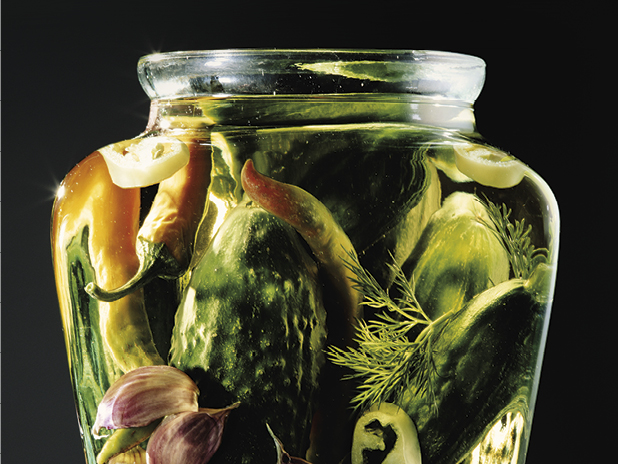It’s Time To Pickle Your Food. Seriously.
I began my career in the 1980s. For most of the first two decades, there was an almost obsessive zeal for the youngest, freshest ingredients. Chefs had an unwritten rule that whoever could get it out of the garden and to the restaurant fastest was the farmer that got the business. The goal for the chef was to figure out how to enhance the ingredient without overpowering it. For me, this philosophy is mostly a forgone conclusion. Diners come in to my restaurants knowing that 90 per cent of the ingredients are bought directly from family-run farms.
More experimenting has been done with fermentation in the last five years in restaurants than had been done in the last 25.
But times change. People get bored. Chefs have to develop new things for diners to experience and enjoy — things that satisfy and pique curiosity at the same time. Now, the fashion is to take some of those farm-fresh ingredients and ferment them. That is: in a controlled setting, break them down and change their nature using microbial growth. It’s essentially controlled rot, using good bacteria instead of harmful microbes.
Personally, I don’t see fermenting or preserving to be at odds with hyper farm-to-table thinking. The challenge for every new generation is to claim an old idea as their own — to re-introduce it to the world. Technology could have rendered most of these techniques obsolete and redundant, but instead the opposite has happened. Now, we can be more precise and efficient in fermenting and preserving. These techniques now sit at the cutting edge of the culinary world. More experimenting has been done with fermentation in the last five years in restaurants than had been done in the last 25.
It’s nice to have new dishes to offer in the dead of winter, even if the ingredients aren’t new at all.
Some restaurants at the forefront are pushing the boundaries of research. Noma in Copenhagen has developed an almost university-level research facility complete with climate-controlled rooms to promote and control fermentation. The kitchens at Faivikën have been aging meats for up to seven months, and burying cabbages and root vegetables in sand over the winter with great results. David Chang has committed a large portion of his development budget to a team of scientists that do nothing but research food fermentation. And closer to home, Blair Lebsac from RGE RD, in Edmonton, has been leaving parsnips and onions in the ground over winter, changing the texture and flavour of the vegetables. The contributions and advances made on this front have opened up a whole new world of flavours, textures and possibilities.
In the end, though, it’s just a resurgence of an old way of looking at food — and that’s part of its charm. Most of the expansion in this area owes something to every grandmother who ever fermented a jar of dill pickles, or every Old World great-grandparent who hung fermented sausages or dry-cured ham in a cellar every fall. This knowledge seemed to skip a generation: my parents were dependant on refrigeration and freezing to keep things over the winter. They didn’t have the time — or the desire — to preserve food, which was essential to the generation before.
So chefs have scoured our grandparents’ répertoires for techniques to adapt. And if that failed to produce the creative results we desired, we looked to other cultures to provide the blueprints or inspiration. My favourite dish of the last few seasons at Model Milk, for example, has been fermented “sour” sausages, a traditional Thai dish that we’ve adopted and made our own.
This is perfect in a country like Canada where the ground is semi-frozen nearly seven months of the year. We cellar roots and squashes, noticing the changes they undergo over the months of storage in dirt boxes. We ferment things and store them. We play around with different products to see how they behave when we promote microbial growth. Nothing will ever replace a beautiful tomato salad in August, when tomatoes are in the height of the season. But it’s nice to have new dishes to offer in the dead of winter, even if the ingredients aren’t new at all.
Justin Leboe is the chef/owner at Model Milk and the recently opened Pigeonhole in Calgary. Look for his regular column on food and restaurants in every issue of SHARP.








